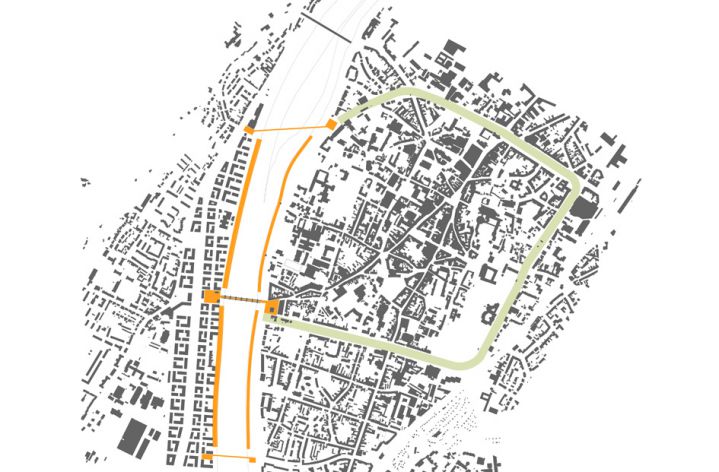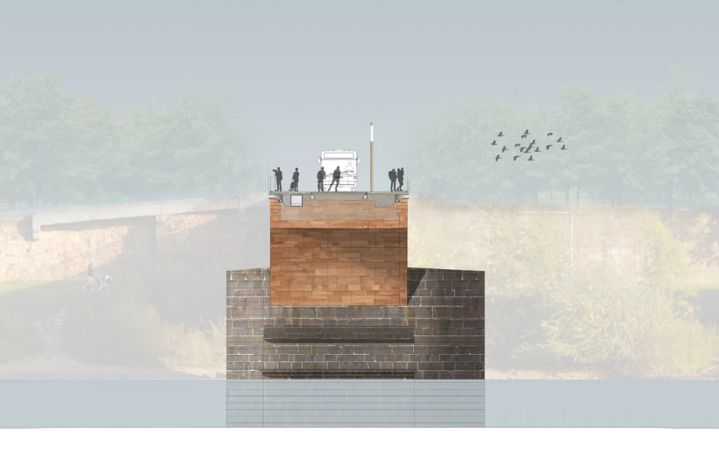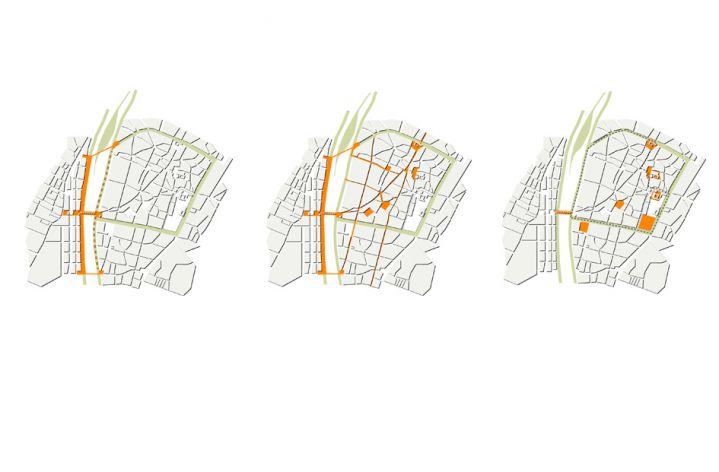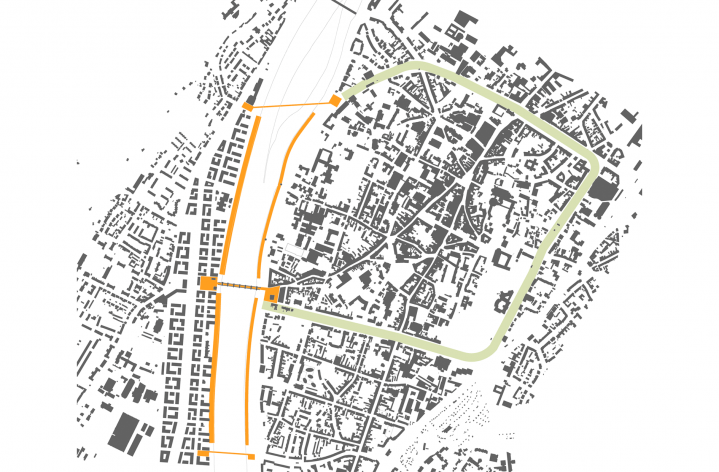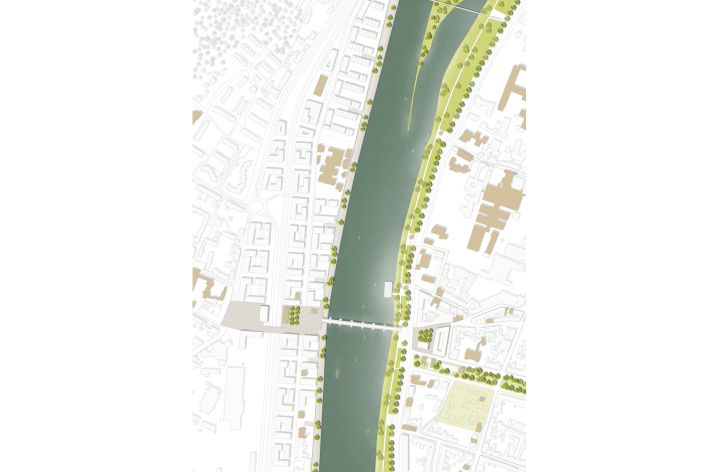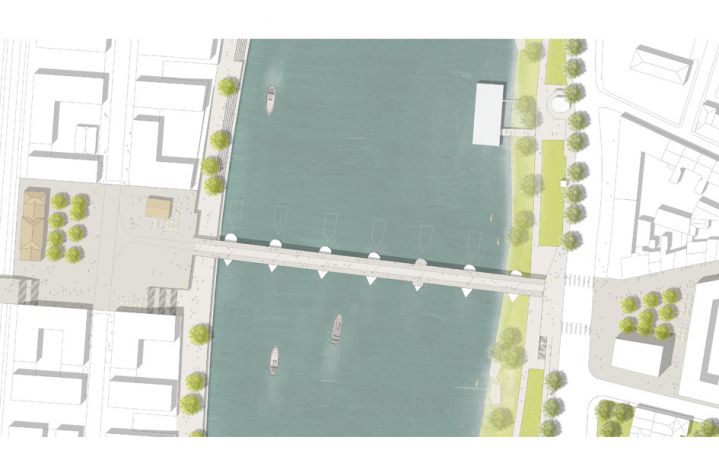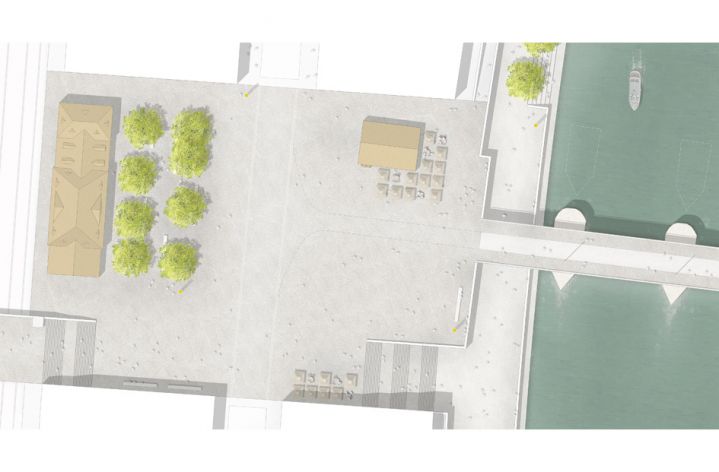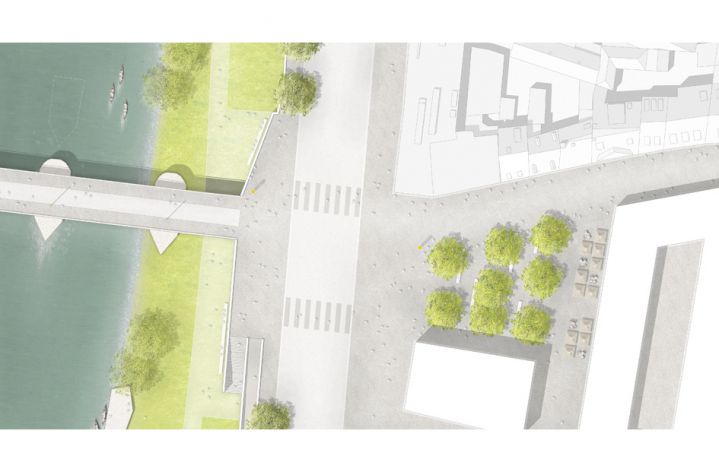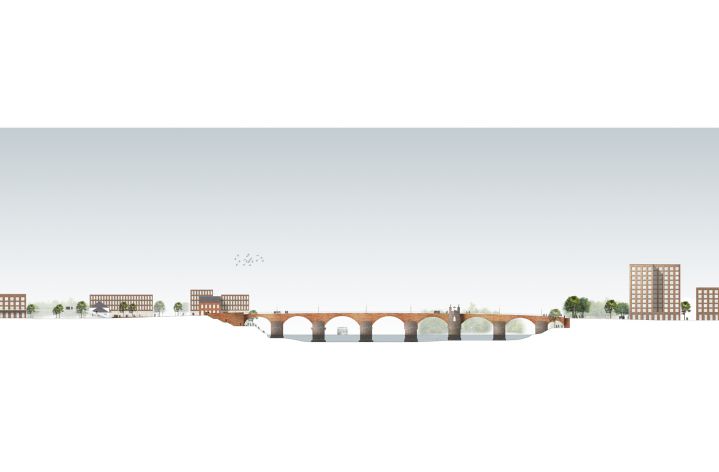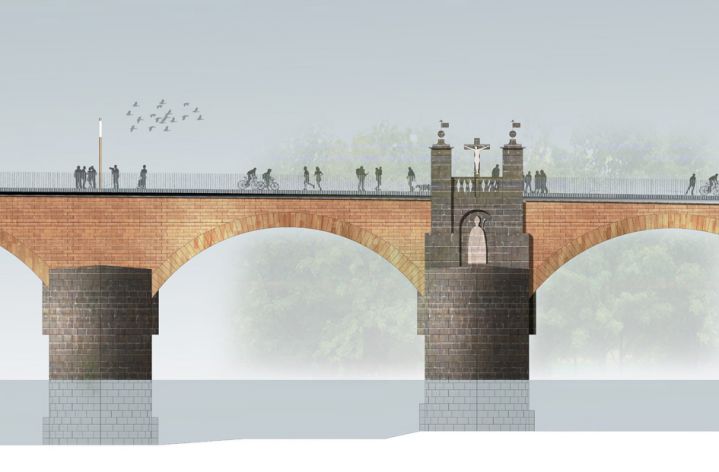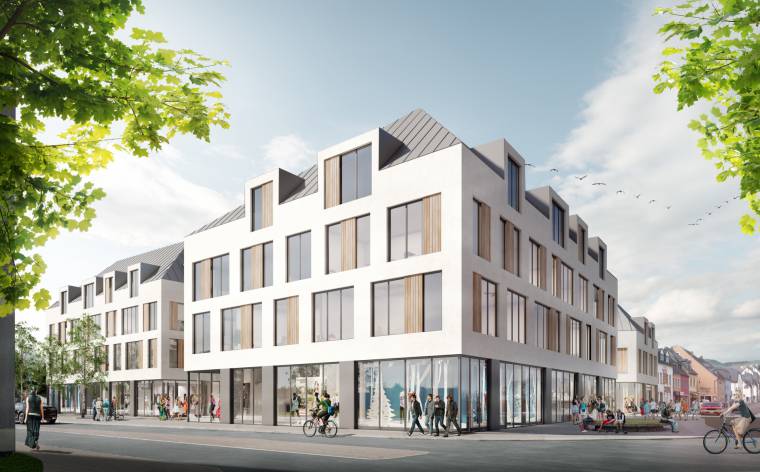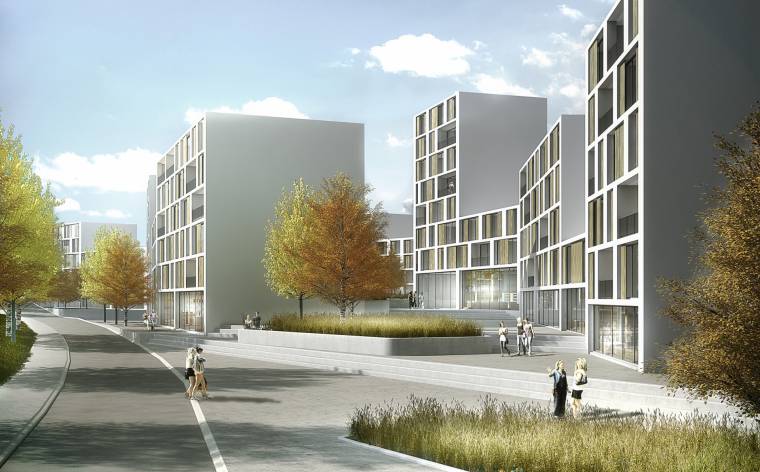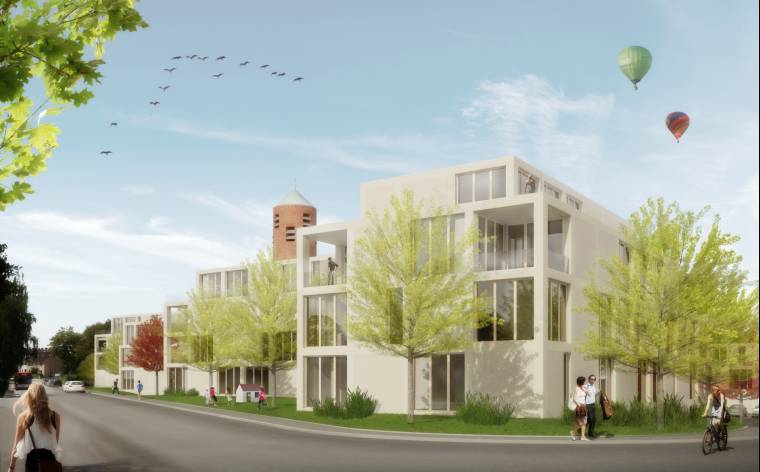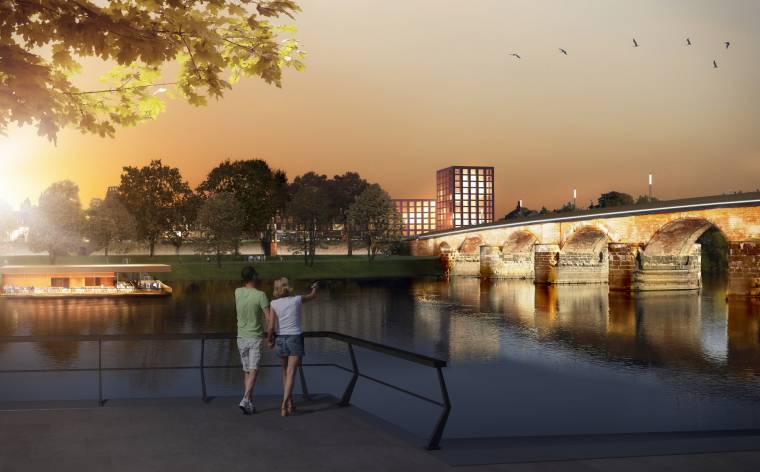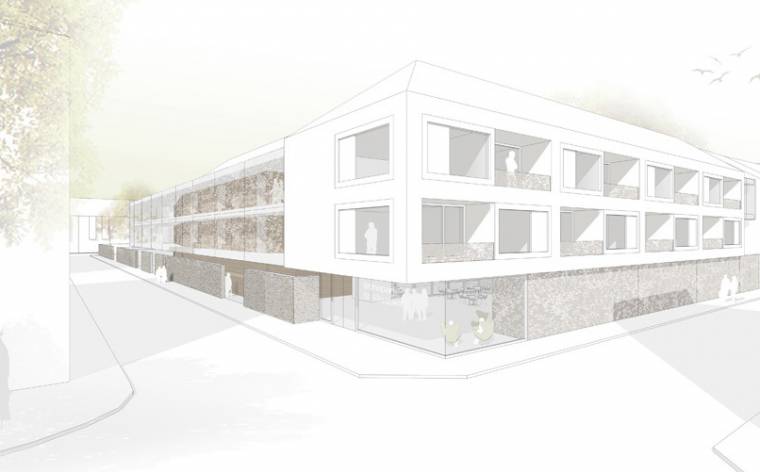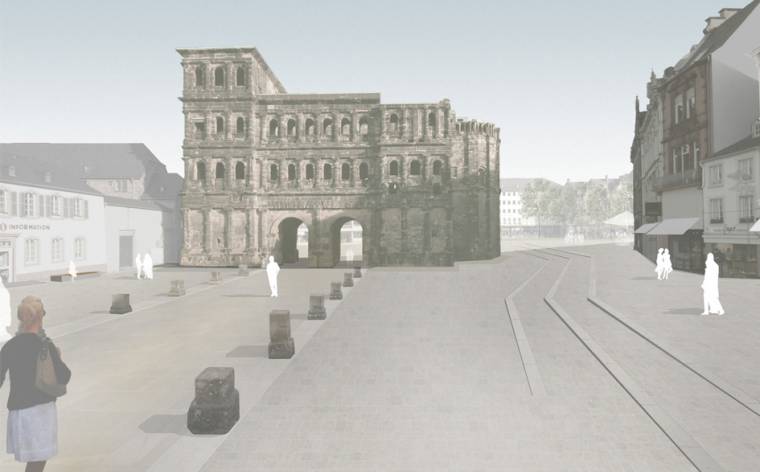Category :
Urbanism competition
Project :
Redesign of the bridge ‘Römerbrücke’ and its surroundings
Client :
Stadt Trier, Stadtplanungsamt
Country :
Germany
Planning period :
09/2012 - 11/2012
Award :
Recognition
Share on
project Redesign of the bridge ‘Römerbrücke’ and its surroundings awarding authority Stadt Trier, Stadtplanungsamt team WW+, Esch-sur-Alzette/Trier (LUX/GER), terra.nova, München (GER) rendering Stube 13, Zurich (CH) competition phase 09/2012 - 11/2012 restricted competition recognition
Subfield 1: UNESCO World Cultural Heritage Roman Bridge
The guiding principle underlying ‘A bridge over the course of time: from former city portal to suburb link’ is the clear message inspiring the urban positioning of the Roman bridge into a new comprehensive spatial context. The starting position sees the Roman bridge as a simple traffic structure exhibiting sometimes substantial design shortcomings. It must be noted that the connection role of the Roman bridge will continue to significantly increase with the accelerated growth of the suburb of Trier West. The closure of the bridge to private transport and the prioritisation of environmental modes of transport serves as a clear commitment to a departure from the use and design of the bridge, to date dominated by motor vehicles. This will contribute to the transformation of a pure ‘road space’ into a ‘space with a road function’. The road surface will be designed as a ‘shared space’ – a surface with no varying height levels. In the same vein, both bridgeheads will be redesigned to feature open spaces and corresponding building structures, thereby creating a new urban setting for the historically significant Roman bridge in the form of a ‘hinge’ between the city halves separated by the Moselle. Design elements include the reduction of the bridge railing to its most basic level, as well as the placement of information pillars with integrated PC system and touch screens, encased in architectural bronze. Numerous newly created seating options boast uninterrupted frontal views through the railing. Finished granite ranging from a mixture of various red/brown to anthracite/brown colours highlights special locations and creates an urban setting. The suggestion for the bus lane is an asphalt surface suitable for urban use with changing earth-coloured aggregates rolled in.
Subfield 2: western bridgehead
The ‘Trier-West city entrance’ is to be developed through a reduction in road space in connection with an urban restructuring of the bridgehead into an attractively and architecturally designed open space. A major contribution to this is the reactivation of Weststrasse Trier-Luxemburg and the regional train station Trier West.
Subfield 3: western Moselle bank
The aim of the ‘Trier-West reorganisation’ is to position Trier-West within the urban fabric as a true counterweight to the old historical and more fragmented inner city with its severely limited expansion possibilities. Contributing elements include an almost continuous development belt on the western side of the Moselle consisting of 4-5 broken-up U-shaped and O-shaped block structures (U-shape: along the river front / O-shape: along the railway line), the maintenance and judicious alteration of the listed ensemble on Luxemburgerstraße using the same form repertoire, the embedding of the Academy of Arts into a generous green area, as well as the successive alteration of the existing building structures. The planned stone ‘West-Promenade’ runs from Irminensteg to Barbarasteg, encouraging people to stroll, wander, enjoy the scenery and good food, while also ensuring sufficient space is reserved for leisure activities and a link way. For this reason, the ‘western Moselle river path’ needs to be enlarged to ensure a conflict-free coexistence of pedestrians and sports enthusiasts. Furthermore, continuous lighting and view points along the Moselle are foreseen, as well as selective attractions, which in conjunction with the course of the Moselle provide a direct connection to the river and its banks.
Subfield 4: western bridgehead
The ‘city centre entrance’ is to be highlighted in terms of architecture, design and functionality. Contributing factors include the decommissioning of the first two to three head buildings on the right hand side of Karl-Marx-Straße towards the city and the closure of the block edge to create an open space. It is foreseen that, to mark the start of the city centre, this new space will also be home to a multi-storey stand-alone building (landmark), accommodating a hotel and ground-level tourist facilities. To strengthen the ‘Roman bridge – Barbara baths connection’, the long-term decommissioning of the buildings along Alleenring (possibly also the listed ensemble) and the restoration of the continuous green space on the former fortification structures around the medieval city centre are planned.
Subfield 5: eastern Moselle bank
The ‘Moselle bank – cranes and old wharfs’ is enhanced by the attractive use of a pontoon with gastronomic options near the Roman bridge. Special emphasis is placed on the visual experience of the world cultural heritage site of the Roman bridge, the old port facility and the town silhouette on the western Moselle bank. ‘Experiencing the archaeological relics’ is an important component of the concept, which will be achieved with the help of an audiovisual information system, guiding visitors through the various historical sites in the vicinity of the Roman bridge, such as the Barbara baths, the wall remains, etc. The ‘city centre – link routes’ will be improved through the redesign of Karl-Marx-Straße and Brückenstraße as a direct axis to the city centre and, through enhancing the connection role between the city centre and the Roman bridge for non-motorised traffic, will achieve a change in image for Karl-Marx-Straße
Contact us !
